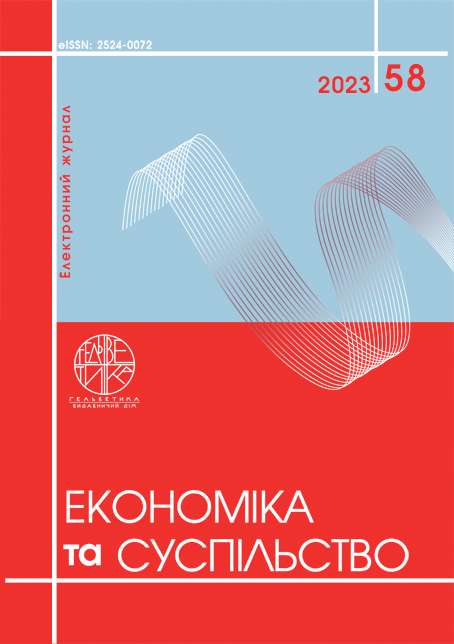METHODICAL ASPECTS OF TEACHING DISCIPLINES BASED ON GIS FOR NON-CORE SPECIALTIES
Abstract
The article is devoted to the analysis of the possibilities of using geographic information systems in the educational process within the framework of the training of applicants for non-core specialties. The advantages and disadvantages of using geographic information systems in the educational process are outlined. The article emphasizes the multidisciplinary properties of geographic information systems, which are revealed in the possibilities of applicants to conduct research activities within the framework of several educational courses. Modern geoinformation systems can be divided into commercial software complexes and Open Source software according to their functionality and licensing conditions. Despite the fact that geoinformation systems belong to a group, they have a wide set of tools, namely: software for converting a raster image into a vector format; raster image analysis tools; the main software core as a means of working with geodata. It is noted that educational disciplines based on geoinformation systems for non-core specialties should be structurally focused on: study of methods of obtaining and analyzing geographic information for the formation of geodatabases; collection of spatial information and its classification; construction of spatial models based on analyzed geodata; studying the basics of GIS mapping; analysis of functional capabilities of geoinformation systems. Attention is focused on the priority of consideration of areas of motivation for non-core specialties regarding the use of geo-information technologies in scientific activity. In this aspect, the issue of choosing the optimal software environment is relevant, which must meet two clear requirements: sufficient functionality for solving research tasks and an intuitive graphical interface. A comparative analysis of the possibilities of using popular geoinformation systems with open source code (QGIS, GRASS, SAGA) in the educational process was carried out. In terms of its functionality, the QGIS software complex can be considered the optimal software as a learning tool in the framework of the training of applicants for non-core specialties.
References
Бабійчук С.М. Дидактичні умови застосування геоінформаційних систем у дослідницькій діяльності старшокласників: автореф. дис. ... канд. пед. наук: 13.00.09. Київ, 2017. 20 с.
Костріков С.В. Географічні інформаційні системи: навчально-методичний комплекс для самостійної роботи студентів зі спеціальностей «Географія», «Економічна та соціальна географія». Харків : ХНУ, 2012. 62 с.
Лук’яненко С., Гайдаржи В., Дацюк О. Побудова навчального процесу в галузі геоінформаційних систем. Моделювання та інформаційні технології. Збірник наукових праць ІПМЕ ім. Г.Є. Пухова НАН України. 2010. № 57. С. 13–21.
Peresadko, V.A., Saulenko, A.S., & Bainazarov, A.M. (2019). Історія і перспективи застосування геоінформаційних систем у навчальному процесі з географії. Проблеми безперервної географічної освіти і картографії, (30), 81–93. DOI: https://doi.org/10.26565/2075-1893-2019-30-09
Сологуб Ю., Безпала О., Харченко О. Геоінформаційні системи як інструмент аналізу розселення в контексті впливу на туристичну сферу суспільно-географічного району. Економіка та суспільство. 2023. № 56. DOI: https://doi.org/10.32782/2524-0072/2023-56-96
Babijchuk, S.M. (2017), “Didactic conditions for the use of geoinformation systems in the research activities of high school students”, Abstract of Ph.D. dissertation, Рedagogical sciences, Institute of Pedagogy, Kyiv, Ukraine.
Kostrikov, S.V. (2012) Heohrafichni informatsiini systemy: navchalno-metodychnyi kompleks dlia samostiinoi roboty studentiv zi spetsialnostei “Heohrafiia”, “Ekonomichna ta sotsialna heohrafiia” [Geographical information systems: educational and methodological complex for independent work of students from the specialties “Geography”, “Economic and social geography”]. Kharkiv: KhNU. 62 p. (in Ukrainian).
Lukyanenko, S., Haydarzhi, V., Datsyuk, O. (2010) Pobudova navchalnoho protsesu v haluzi heoinformatsiinykh system. Modeliuvannia ta informatsiini tekhnolohii [Construction of the educational process in the field of geoinformation systems. Modeling and information technologies]. Zbirnyk naukovykh prats IPME im. H.Ie. Pukhova NAN Ukrainy, no 57, pp. 13–21.
Peresadko, V.A., Saulenko, A.S., & Bainazarov, A.M. (2019). Istoriia i perspektyvy zastosuvannia heoinformatsiinykh system u navchalnomu protsesi z heohrafii [History and prospects of the application of geoinformation systems in the educational process of geography]. Problemy bezperervnoi heohrafichnoi osvity i kartohrafii, no 30, pp. 81–93. DOI: https://doi.org/10.26565/2075-1893-2019-30-09
Sologub, Yu., Bezpala, O., & Kharchenko, O. (2023). Heoinformatsiini systemy yak instrument analizu rozselennia v konteksti vplyvu na turystychnu sferu suspilno-heohrafichnoho raionu [Geoinformation systems as a tool for the analysis of resettlement in the context of the impact on the tourism sphere of the socio-geographical district]. Ekonomika ta suspilstvo, no 56. DOI: https://doi.org/10.32782/2524-0072/2023-56-96

This work is licensed under a Creative Commons Attribution 4.0 International License.


